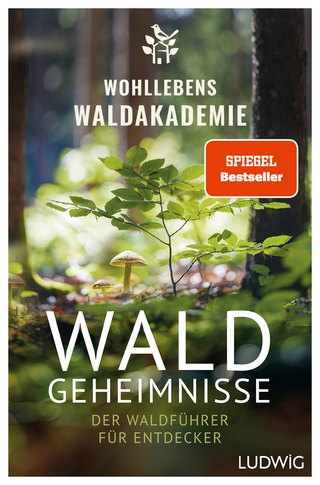
Call of Nature
Pelagic Publishing (Verlag)
978-1-78427-105-3 (ISBN)
'I love this book' —Nick Baker
The author completes the book with an identification guide to dung itself, so that you can identify the animal that left it behind. Pellets or pats? Scats, spraints, frass, guano, spoor learn your way around different species droppings. There's also a dung-feeder s identification guide that includes the species you re most likely to encounter on an exploration of the dung heap.
Journey through the digestive systems of humans, farm and wild animals, and meet some of nature’s ultimate recyclers as they eat, breed in and compete for dung. The fall of bodily waste onto the ground is the start of a race against the clock as a multitude of dung-feeders and scavengers consume this rich food source. From the enigmatic dung-rolling beetles to bat guano and giant elephant droppings, dung creates a miniature ecosystem to be explored by the aspiring dung watcher.
The author completes the book with an identification guide to dung itself, so that you can identify the animal that left it behind. Pellets or pats? Scats, spraints, frass, guano, spoor – learn your way around different species’ droppings. There’s also a dung-feeder’s identification guide that includes the species you’re most likely to encounter on an exploration of the dung heap.
Richard Jones is a nationally acclaimed entomologist, a fellow of the Royal Entomological Society, fellow of the Linnean Society, and past president of the British Entomological Society. He has been fascinated by wildlife since a childhood exploring the South Downs and Sussex Weald after plants and insects. Richard writes about insects, nature and the environment for BBC Wildlife, the Guardian, Gardener’s World and Countryfile and has regular radio appearances on such programmes as Home Planet and Woman’s Hour. Richard is author of several books on science and wildlife including Nano Nature (HarperCollins, 2008), Beekeeper’s Bible (to which he is a major contributor, HarperCollins 2010). Extreme Insects (HarperCollins) was published in September 2010 and received widespread recognition in the press. The paperback was issued in September 2011. The Little Book of Nits (Bloomsbury) was published in May 2012. Mosquito, in the acclaimed Animal series (Reaktion Books) appeared in August 2012. House guests, house pests - a natural history of animals in the home was published in February 2015 (Bloomsbury). It was released in paperback in February 2016. He is currently working on the Beetles volume of HarperCollins' famous New Naturalist series.
1 Introduction – what is dung?
2 Cleanliness is next to fastidiousness – the human obsession with sewage
3 Waste not – dung as a human resource
4 It’s worth fighting over – dung as a valuable ecological resource
5 Dung communities – interactions and conflicts
6 The evolution of dung feeding – where did it all begin?
7 A closer look – who lives in dung?
8 Cross section of a dung pat – a slice of coprophagous life
9 The ageing process – time line of a dung pat
10 Dung problems – the end of world ordure as we know it
11 Dung types – an identification guide
12 Dung inhabitants and dung feeders – a rogues’ gallery
13 Dung is a four-letter word – a scatological dictionary
References
Index
| Erscheinungsdatum | 10.09.2016 |
|---|---|
| Zusatzinfo | 38 Figures; 160 Illustrations, black and white |
| Verlagsort | Exeter |
| Sprache | englisch |
| Maße | 138 x 216 mm |
| Gewicht | 480 g |
| Themenwelt | Sachbuch/Ratgeber ► Natur / Technik ► Natur / Ökologie |
| Sachbuch/Ratgeber ► Natur / Technik ► Naturführer | |
| Naturwissenschaften ► Biologie ► Zoologie | |
| ISBN-10 | 1-78427-105-5 / 1784271055 |
| ISBN-13 | 978-1-78427-105-3 / 9781784271053 |
| Zustand | Neuware |
| Haben Sie eine Frage zum Produkt? |
aus dem Bereich


